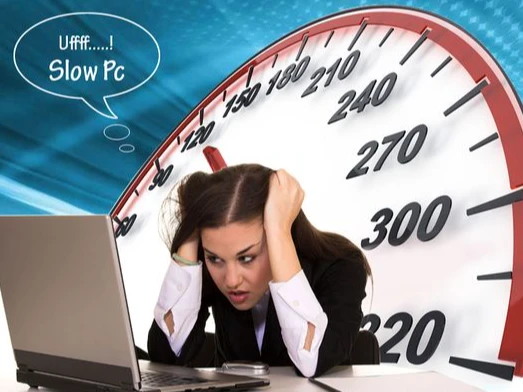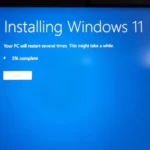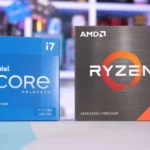Hey, tech lovers! It’s your favorite blogger again, and this time I’m going to talk about something we all hate: a slow computer. That once-fast machine now feels like it’s stuck in molasses, and every click takes forever. Take a deep breath before you give up and buy a new computer or throw your old one out the window. The good news is that you can often fix a slow computer yourself with a few smart changes.
I’ve been using technology for years, and one of the most common complaints I hear is about performance problems. I decided to make the best guide on how to fix a slow computer. This is your go-to guide, full of useful tips and things you can do to get your slow system back up and running.
Why Your Computer Feels Like a Snail
Let’s talk about why your computer might be sick before we get into solutions. Your computer is like a busy office. When it’s brand new, everything is in order and tasks are done quickly. But over time, things get messy, resources get stretched, and things just slow down. Some common causes are:
Too Many Startup Programs: Picture everyone in that office trying to talk at once as soon as the doors open. That’s what happens when you start your computer and too many programs open up on their own.
Resource-Hungry Software: Some programs, especially those that use a lot of graphics or run a lot of applications at once, can use up a lot of your computer’s processing power and memory.
Full Hard Drive: A hard drive that is almost full doesn’t leave much room for your computer to work well, like trying to get around in a crowded room.
Malware and Viruses: These bad guys can use up system resources, make things act strangely, and slow down performance a lot.
Old Software and Drivers: Software that is too old may not work well or be optimized for your current hardware. Drivers that are out of date can also cause problems with compatibility and slow down performance.
Disk Fragmentation: Files on your hard drive can become fragmented over time, which means that parts of the same file are stored in different places, making it harder to get to. (This isn’t as big of a problem with SSDs these days.)
Not enough RAM: Random Access Memory (RAM) is the short-term memory of your computer. If it’s full, your computer will use the much slower hard drive as temporary memory.
The Most Important Things to Do First to Fix a Slow Computer
Okay, let’s get to work! To figure out what’s wrong with your slow computer and how to fix it, follow these first steps:
1. Restart your computer (yes, really!)
It sounds easy, but restarting your computer can often fix temporary problems and get rid of processes that have built up and are slowing things down. You could say that you’re giving your computer a new start.
Tip: Get into the habit of restarting your computer at least once a day.
2. Shut Down Extra Programs and Browser Tabs
Check out your taskbar (or Activity Monitor on a Mac). How many apps are running that you aren’t using right now? Every program that is open uses system resources. Having a lot of browser tabs open can also use up your RAM. Shut down anything you don’t need.
Tip: Close any other programs that aren’t needed before starting a task that uses a lot of resources to free up system resources.
3. Look at the programs that start up with your computer
Too many programs starting up at the same time can make your computer take a long time to boot up and run poorly overall, as we said before. Here’s how to deal with them:
Windows: To open Task Manager, press “Ctrl + Shift + Esc.” Click on the “Startup” tab. Turn off any programs that you don’t need to start up on their own. Be careful and look up programs you don’t know about before turning them off.
macOS: Open System Preferences and click on Users & Groups. Then click on Login Items. Click the “-” button after choosing the programs you don’t want to open when you log in.
Tip: Check your startup programs often and turn off any that you don’t use very often.
A Closer Look: More Advanced Ways to Make Your PC Faster
If the basic steps haven’t completely fixed the problem, it’s time to look into more advanced ways to fix a slow computer:
4. Check for viruses and malware
Malicious software can run in the background without you knowing it, using up resources and slowing down your computer. Do a full system scan with your antivirus program. If you don’t have one, think about getting a good free or paid one.
Tip: Set up regular full system scans with your antivirus software to keep your computer clean.
5. Update your operating system and drivers
Updates for software often fix bugs and make things work better. Check to see if your operating system (Windows or macOS) is up to date. Outdated drivers for your hardware parts, like your graphics card, can also cause problems with performance.
Windows: Click “Check for updates” in the Windows Update section of Settings > Update & Security. You can usually get driver updates by going to Device Manager (search for it in the Start Menu). You can also usually find the newest drivers on the website of the company that made them (for example, Nvidia, AMD, or Intel).
macOS: Choose Software Update from the System Preferences menu. Most of the time, macOS updates include updates for drivers.
Helpful Hint: Set your operating system to update itself automatically, and every so often check for driver updates for your most important hardware parts.
6. Make Room on Your Hard Drive
If your hard drive is almost full, it can make your computer run much more slowly. Get rid of programs you don’t use anymore, delete files you don’t need (empty your Recycle Bin or Trash!), and think about moving big files like photos and videos to an external hard drive or the cloud.
Useful Tip: For the best performance, try to keep at least 15–20% of your hard drive space free.
7. Defragment Your Hard Drive (HDD Only)
This step is mostly for computers that have traditional hard disk drives (HDDs). As we said before, fragmentation can make it take longer to access files. There is a defragmentation tool built into Windows. In the Start Menu, look for “Defragment and Optimize Drives.”
Note: Do NOT defragment your computer if it has a Solid State Drive (SSD). This can actually make it last less long, and it doesn’t give the same performance benefits as an HDD.
Tip for Real Life: If you have an HDD, set up disk defragmentation to run every so often.
8. Think about getting more RAM
Your computer may be running out of RAM if you often run several demanding programs at once or work with big files. A big performance boost can come from upgrading your RAM. To find out what kind of RAM your computer can use and how much it can hold, look at its specs. (Click here to read an article that explains how to check your computer’s specs.)
Helpful Hint: If your computer always slows down when you try to do more than one thing at once, think about upgrading your RAM as a cheap way to speed things up.
9. Restart Your Browser
Sometimes, too many browser extensions, too much cache, or too much data can make your web browsing slower and even slow down the whole system. You can usually reset settings to their default in most browsers.
Helpful Hint: Resetting the settings on your browser might help if it seems slow. Make sure to back up any important data or bookmarks first.
10. Reinstall Your Operating System (The Nuclear Option)
If you’ve tried everything else and your computer is still slow, you can often get it back to its original speed by doing a clean installation of your operating system. This will delete all of your files, so make sure to back up anything important first. (See [Link to a guide on how to do a clean install of Windows or macOS] for more information.)
Helpful Hint: A clean install can work, but it’s a lot of work. Only think about this after you’ve tried all the other ways to fix the problem and made sure you have a good backup.
Useful Advice for Keeping Your Computer Fast
The best way to fix a slow computer is to stop it from getting slow in the first place! Here are some useful tips to use when you use your computer every day:
Be Careful What You Install: Only install software from trusted sources, and don’t install programs you don’t really need.
Remove Programs You Don’t Use: Look at the programs you have installed on a regular basis and remove any that you don’t use anymore.
Clean Up Your Desktop: Your computer may actually run slower if your desktop is cluttered because it has to load all those icons when it starts up. Put your files in folders to keep them organized.
Manage Browser Extensions: Having too many browser extensions can slow down your computer. Look over your extensions often and get rid of the ones you don’t use.
Be Careful Online: Don’t click on links that look suspicious or download files from sites you don’t trust. This will help keep your computer safe from malware.
Make sure to back up your data often: Having backups is important even if they don’t directly affect speed. This is because systems can fail or you may need to do a clean install. (See my article on why data backups are important for more information.)
Conclusion: Get Your Computer Back to Speed
It can be very annoying to have a slow computer, but as you’ve seen, there are a lot of things you can do to figure out what’s wrong and fix it. You can often “fix a slow computer” and have a much better and more efficient computing experience if you know what causes it and follow these simple steps. Don’t forget to be patient, follow the steps in order, and ask for more help if you need it.
Now go out and give your favorite machine a new lease on life!
https://bigezwehotv.rw/category/trends
https://us.norton.com/blog/malware/can-a-virus-slow-down-your-computer
https://support.microsoft.com/en-us/windows/windows-update-faq-8a903416-6f45-0718-f5c7-375e92dddeb2







